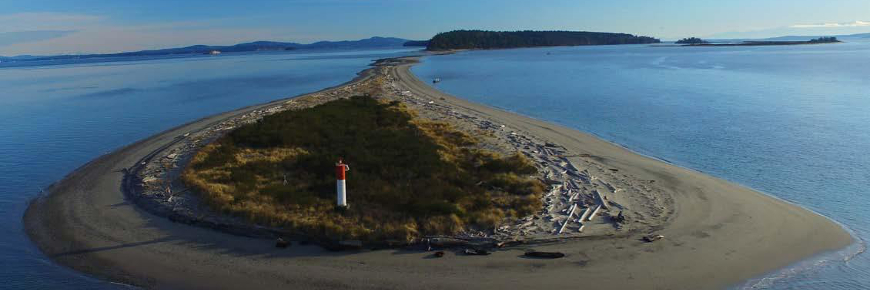
Ecosystem on the edge
Restoring ecosystems and species in Gulf Islands National Park ReserveFootnote *
What’s the issue?

Sidney Island, in Gulf Islands National Park Reserve, protects rare coastal sand ecosystems, where marine and land environments meet. These habitats are typically kept open and everchanging because of frequent disturbance from wind and waves. In recent years, invasive plants, like Scotch broom and European beach grass, have been moving in and stabilizing the shifting sands. This change is threatening the ecosystem and the survival of several rare species, including the common nighthawk, the silky beach pea and the contorted-pod evening-primrose, which depend on an open sand habitat. Parks Canada is taking practical action to save this ecosystem and these species from going over the edge.
What’s our approach?
- Remove priority invasive plant species, including Scotch broom and European beach grass, from rare coastal sand ecosystem on Sidney Spit.
- Increase rare plant populations by sowing nursery-grown seed into prepared habitat.
- Install fencing and signage to improve site protection and enhance visitor facilities and learning opportunities.
- Foster engagement with volunteers and partners to contribute to the project; collaborate with other organizations in the region involved in coastal sand ecosystem restoration.
What’s been accomplished?
- Removed 99 percent of invasive shrubs and 55 percent of invasive beach grass from the site; improved habitat quality for species at risk by restoring critical habitat and increasing available open habitat.
- Restored habitat and grew more than 30,000 new plants of the endangered contorted-pod evening-primrose, which increased the population size by 950 percent; sowed seeds for American glehnia and yellow sand-verbena.
- Developed new interpretive signage onsite to teach visitors about how they can help protect this special ecosystem.
- Recruited 241 new volunteers, who contributed more than 1,500 hours.
Related links
- Igniting restoration
- Two pines in decline
- Conserving an alpine enigma
- Rescue the fescue
- Historic homecoming
- Wildlife crossings
- Going with the flow
- Propagating success
- Listening to the sea, looking to the future
- Keeping dunes dynamic
- Wild about wolves
- Restoring kelp in Gwaii Haanas National Marine Conservation...
- Llgaay gwii sdiihlda, or restoring balance
- Date modified :